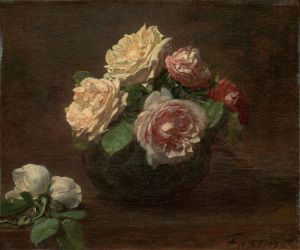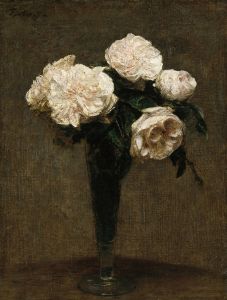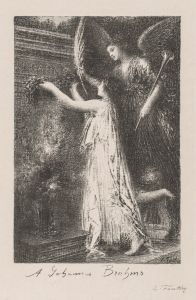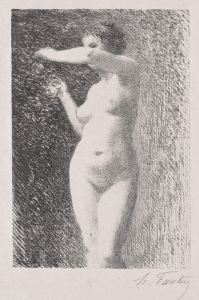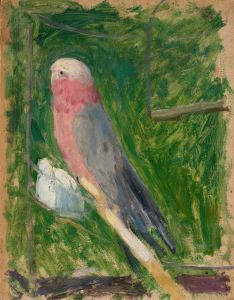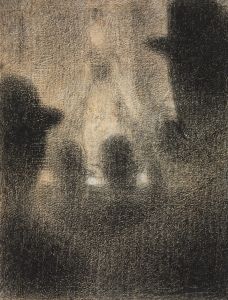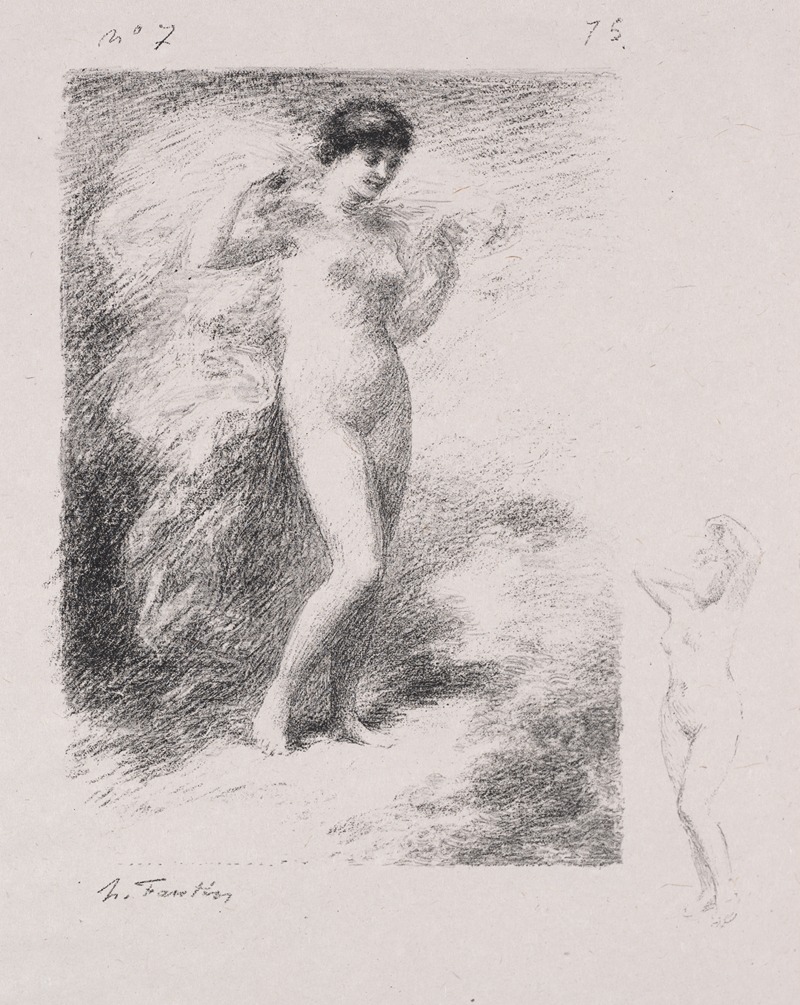
Néère
A hand-painted replica of Henri Fantin-Latour’s masterpiece Néère, meticulously crafted by professional artists to capture the true essence of the original. Each piece is created with museum-quality canvas and rare mineral pigments, carefully painted by experienced artists with delicate brushstrokes and rich, layered colors to perfectly recreate the texture of the original artwork. Unlike machine-printed reproductions, this hand-painted version brings the painting to life, infused with the artist’s emotions and skill in every stroke. Whether for personal collection or home decoration, it instantly elevates the artistic atmosphere of any space.
Henri Fantin-Latour was a French painter renowned for his exquisite still lifes and group portraits. One of his lesser-known works is "Néère," which exemplifies his skill in capturing the delicate interplay of light and texture. Fantin-Latour was born in 1836 in Grenoble, France, and he developed a passion for art at a young age. He moved to Paris, where he studied at the École des Beaux-Arts and honed his craft, becoming part of the circle of artists that included Édouard Manet and other Impressionists, although he himself remained more aligned with Realism.
"Néère" is a painting that reflects Fantin-Latour's interest in classical themes and his ability to infuse them with a sense of intimacy and realism. The painting depicts a female figure, which is a common subject in his oeuvre, often drawing inspiration from mythology and literature. Fantin-Latour was known for his ability to blend the real with the ideal, creating works that were both grounded in reality and elevated by their poetic qualities.
The painting is characterized by its soft, muted color palette and the gentle modeling of the figure, which is typical of Fantin-Latour's style. His technique often involved delicate brushwork and a keen attention to detail, allowing him to capture the subtleties of light and shadow. This approach is evident in "Néère," where the play of light across the figure's form adds depth and dimension to the composition.
Fantin-Latour's work was well-regarded during his lifetime, and he received several accolades for his contributions to art. Despite his association with the Impressionists, he maintained a distinct style that was more aligned with the traditions of the Old Masters. His paintings often reflect a sense of calm and introspection, qualities that are evident in "Néère."
The painting is part of a broader body of work that includes portraits, still lifes, and imaginative compositions. Fantin-Latour's still lifes, in particular, are celebrated for their meticulous detail and vibrant yet subtle use of color. While "Néère" may not be as widely recognized as some of his other works, it nonetheless exemplifies the qualities that make Fantin-Latour's art enduringly appealing.
Fantin-Latour passed away in 1904, but his legacy endures through his paintings, which continue to be studied and admired for their technical proficiency and emotive power. "Néère," like many of his works, offers a glimpse into the artist's world, where the beauty of the everyday is elevated through his masterful touch. His ability to convey emotion and atmosphere through his paintings ensures that his work remains relevant and appreciated by art enthusiasts and scholars alike.






